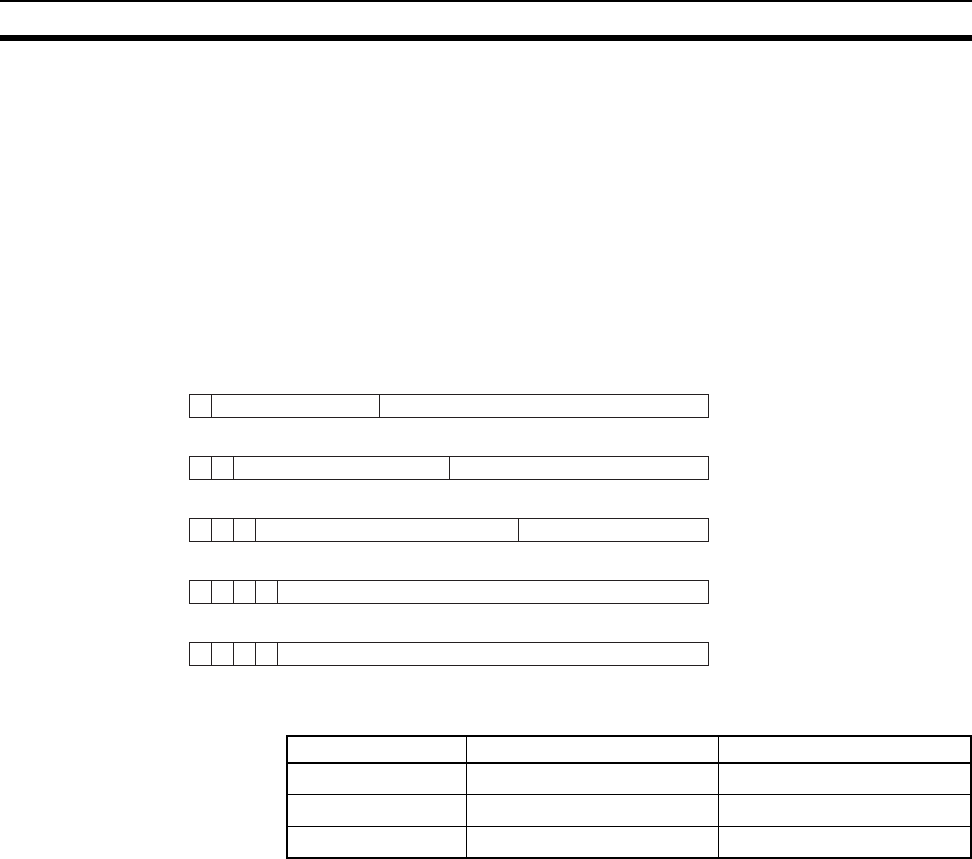
92
IP Addresses Section 5-1
5-1 IP Addresses
5-1-1 IP Address Configuration
IP addresses are made up of 32 bits of binary data divided into four 8-bit fields
called octets. These four octets provide the network number (net ID) and host
number (host ID). The network number identifies the network, and the host
number identifies the node (or host) on the network.
The network numbers in an IP address are divided into three classes, A, B,
and C, so that the address system can be selected according to the scale of
the network. (Classes D and E are not used.) The configuration of the IP
address for each of these classes is shown in the following diagram.
The number of networks in each class and the number of nodes possible on
the network differ according to the class.
The 32 bits of an IP address are divided into four sections of eight bits each,
and expressed as a punctuated number. IP addresses are represented by the
decimal equivalent of each of the four octets in the 32-bit address, each sepa-
rated by a period. For example, the binary address 10000010 00111010
00010001 00100000 would be represented as 130.58.17.32.
Note The same network number must be set for every node on the same Ethernet
network.
5-1-2 Allocating IP Addresses
IP (Internet Protocol) is a standard communications protocol used throughout
the world, and is designed to enable communications between any Ethernet
nodes regardless of the networks on which they exist. To achieve this, net-
work numbers are allocated by the Network Solutions, InterNIC Registration
Services, to ensure that all Ethernet networks have unique numbers regard-
less of where they exist. The local system administrator is left the responsibil-
ity of allocating unique host numbers locally. You therefore should obtain a
network number from the InterNIC Registration Services to ensure unique-
ness and allow for future network expansions if required.
Bit 31 23 0
0Class A
Bit 31 15 0
0Class B 1
Bit 31 7 0
0Class C 1 1
Bit 31 0
0Class D 1
1
1
Bit 31 0
1Class E 1
1
1
Network number (7 bits)
Host number (24 bits)
Network number (14 bits) Host number (16 bits)
Network number (21 bits) Host number (8 bits)
Multicast address (Cannot be used.)
(Cannot be used.)Identification address
Class Number of networks Number of hosts
Class A Small
2
24
−2 max. (16,777,214 max.)
Class B Medium
2
16
−2 max. (65,534 max.)
Class C Large
2
8
−2 max. (254 max.)


















